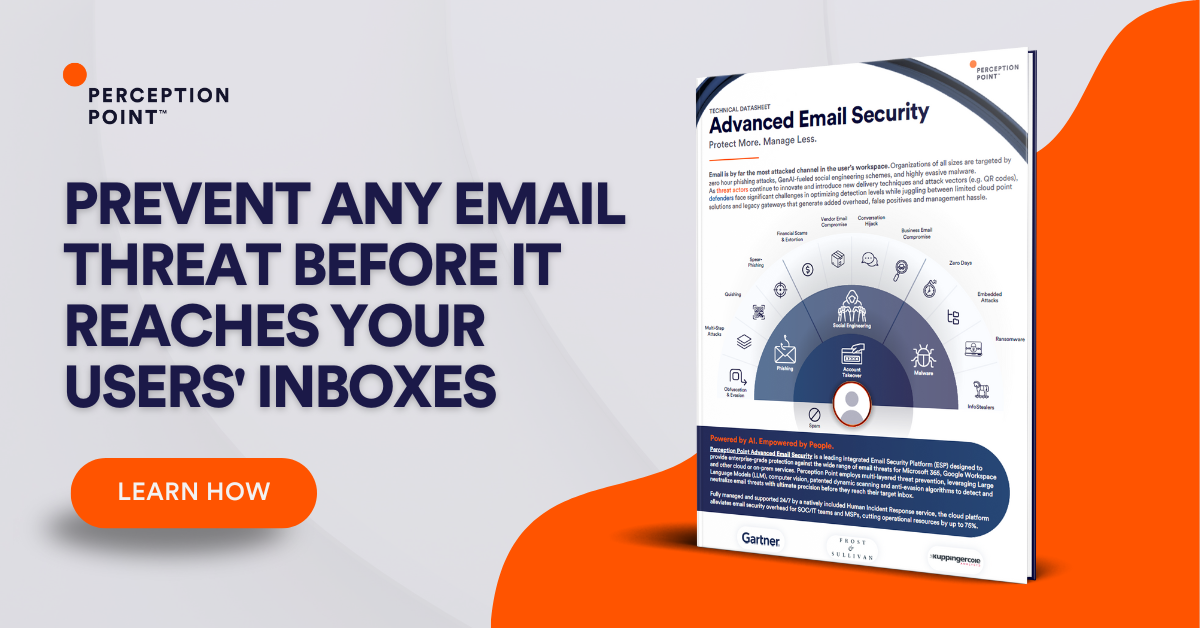Why Are Email Security Best Practices So Important?
Email has become a critical part of our lives. From important business communications to personal messages, emails have become a vital mode of communication. However, with the rise in its usage, emails have become a prime target for cybercriminals. This concerns companies and individuals alike, as emails create a significant risk of data breaches and identity theft. This makes it imperative for everyone to understand and adopt email security best practices.
Email security best practices are a set of guidelines and procedures that individuals and organizations should follow to ensure the safety and security of their email communications. These practices are designed to protect sensitive information from being intercepted, stolen, or compromised. They also aim to prevent the email system from being used as a conduit for spreading malware or phishing attacks.
By following email security best practices, you can significantly reduce your risk of falling victim to cyberattacks. It’s crucial to be aware of these practices and integrate them into your daily email usage.
Will cover the following email security best practices:
In this article
Authentication and Password Management
1. Enable Two-Factor Authentication (2FA) or Multi-Factor Authentication (MFA)
Two-factor authentication (2FA) is a security measure that requires users to provide two different types of information to verify their identity. 2FA typically involves identifying yourself via something you know (like a password) and something you have (like a mobile phone).
An extended form of 2FA is multi-factor authentication (MFA), in which there can be more than two authentication factors. For example, in addition to something you know and something you have, MFA may also involve something you are (a physical part of you, like a fingerprint or facial recognition).
By enabling 2FA or MFA, you add an extra layer of security to your email account. Even if a hacker manages to get hold of your password, they would still need the second form of authentication to access your email account. This makes it considerably harder for unauthorized individuals to gain access to your email account and reduces the risk of a security breach.
Most email service providers offer 2FA/MFA as part of their security features. It’s usually a simple process to set up, and once enabled, it can offer substantial protection for your email account.
2. Use Strong Passwords
The use of strong passwords is one of the most fundamental email security best practices. A strong password is long, complex, and unique. It should include a mix of upper and lower case letters, numbers, and special symbols.
A strong password makes it harder for cybercriminals to guess or crack your password using brute force attacks. Avoid using obvious information like your name, birthday, or common words. It’s also important to use a different password for each of your online accounts to prevent a breach in one account from affecting your other accounts. Using a password manager can help create and remember strong passwords for each of your online accounts.
3. Never Disclose Your Password
Never disclose your password to anyone. This seems like a no-brainer, but you’d be surprised at how often people share their passwords with others, either intentionally or unintentionally. This can happen in various ways, such as over the phone, through email, or even by writing it down on a piece of paper.
By sharing your password, you’re giving someone else access to your email account and all the sensitive information it contains. Even if you trust the person, it’s still a risky practice as you can’t control what they might do with your password or how well they protect it.

Tal ZamirCTO, Perception Point
Tal Zamir is a 20-year software industry leader with a track record of solving urgent business challenges by reimagining how technology works.
TIPS FROM THE EXPERTS
- Apply Data Loss Prevention (DLP) Policies on Emails. Implement DLP policies that automatically inspect and classify outbound emails for sensitive content. This ensures that confidential information doesn’t accidentally or maliciously leave the organization, mitigating the risk of data breaches.
- Create a Rapid Response Plan for Email-Based Incidents. Establish a rapid response plan specifically for email-based security incidents. This plan should include immediate containment measures, communication protocols, and post-incident analysis procedures. Regular drills and simulations can ensure your team is prepared to act quickly when an actual threat emerges.
- Enforce Least Privilege Access for Email Accounts. Ensure that email accounts, especially those with access to sensitive information, operate under the principle of least privilege. Limit access rights to only what is necessary for the job function, reducing the potential impact of a compromised account.
- Conduct Regular Email Security Audits. Periodically review your email system’s security settings, audit logs, and access controls. This proactive approach allows you to identify and mitigate potential vulnerabilities before they can be exploited by attackers.
Email Encryption and Secure Connections
3. Encrypt Emails
One of the essential email security best practices involves encrypting your emails. Encryption is a process that converts your email content into a code that can only be deciphered using a unique key. This makes it much harder for anyone other than the intended recipient to read your email, even if they manage to intercept it.
Email encryption can be particularly beneficial in a business setting where sensitive data is often shared via email. Whether it’s financial information, customer data, or strategic plans, encrypting your emails can help keep this information safe. Many email providers offer built-in security features, including encryption. However, if your email provider does not offer this feature, there are several third-party encryption tools you can use.
4. Use Encrypted Connections
While encrypting emails is a great start, you can enhance your email security further by ensuring that you are using encrypted connections. An encrypted connection, often referred to as a Secure Sockets Layer / Transport Layer Security (SSL/TLS) connection, ensures that the data transmitted between your computer and the email server is encrypted.
Using an encrypted connection is particularly important when you are accessing your email from a public network, such as a coffee shop or airport. These networks are often unsecured, making it easier for hackers to intercept your data. By using an encrypted connection, you can ensure that your email content remains secure, even if you are using a public network.
5. Do Not Access Email Over Unsecured Wi-Fi Networks
Another crucial email security best practice involves being mindful of the networks you connect to. Unsecured or public Wi-Fi networks can pose significant security risks. Hackers can easily exploit these networks to gain access to your emails and other sensitive data.
As a best practice, avoid accessing your email from public Wi-Fi networks whenever possible. If you must use a public network, consider using a virtual private network (VPN) to encrypt your internet connection and protect your data. A VPN creates a secure tunnel for your data to pass through, making it much harder for hackers to access.
6. Use a Secure Email Gateway
For organizations, implementing a secure email gateway is an effective email security best practice. A secure email gateway is a product or service designed to block malicious emails and prevent them from reaching the user’s inbox.
These gateways use a variety of techniques to detect and block threats, including spam filters, virus scanners, and phishing detection. Some secure email gateways also offer data loss prevention (DLP) features, which can prevent sensitive data from being sent out via email.
Implementing a secure email gateway can add an extra layer of protection for an organization’s email users, helping to keep your sensitive data safe.
Monitoring and Awareness
7. Keep an Eye Out for Suspicious Emails
One of the most effective email security best practices is to stay vigilant and keep an eye out for suspicious emails. Cybercriminals often use clever tactics to trick users into opening emails that contain malware or phishing scams. These emails may appear as urgent requests or offers from familiar brands or even colleagues.
It’s essential to scrutinize any email that seems out of the ordinary. Are there spelling or grammar mistakes? Is the sender’s email address unfamiliar or slightly altered? These can be telltale signs of a phishing attempt. It’s always better to double-check with the supposed sender if something seems off.
Remember, it’s not just about protecting your data, but also about safeguarding the information of your clients, colleagues, and partner organizations. Being vigilant and recognizing the signs of suspicious emails is a crucial first step in maintaining email security.
8. Think Before You Click
Perhaps the most basic email security practice is to think before you click. Whether it’s an attachment in an unanticipated email, a link in a promotional offer, or even a download button on a website, taking a moment to assess the situation can save you from potential harm.
Cybercriminals often rely on the impulsive nature of users to click on links or open attachments without considering the potential consequences. Before clicking on anything, ask yourself: Do I recognize the sender? Was I expecting this email or attachment? Does something feel off about this email?
9. Monitor the Organization’s Email Activity
An important best practice for administrators or IT managers is to visualize the email activity of an organization or department for which they are responsible. This means keeping track of who is sending and receiving emails, the content of these emails, and any unusual activity. There are various tools available that provide detailed analytics of an organization’s email activity, which can be instrumental in spotting any irregularities or potential threats.
Visualizing email activity also helps in identifying patterns that could indicate a security threat. For instance, a sudden spike in outgoing emails could suggest that an account has been compromised and is being used to send out spam or phishing emails.
Promoting transparency in email communication within your team not only enhances security but also fosters a culture of accountability. It encourages employees to be careful about their email activities, knowing that they are being monitored for the sake of security.
Anti-Malware Measures and Email Security Solutions
10. Use Antivirus Software
Antivirus software serves as a first line of defense against common threats like viruses, malware, spyware, ransomware, and other malicious activities. These software programs work by scanning incoming and outgoing emails, as well as attachments downloaded or opened on your computer, for any suspicious activity or known threats.
However, it’s important to understand that some antivirus programs offer basic protection against common threats, while others provide comprehensive protection against a wider range of threats, including advanced persistent threats (APTs) and zero-day attacks. If you have sensitive data or manage business critical activities on your computer, you should opt for an advanced anti-malware solution.
11. Keeping Software And Antivirus Programs Up-To-Date
Keeping your software and antivirus programs up-to-date is another critical aspect of email security. Outdated software is more vulnerable to attacks as hackers often exploit known vulnerabilities to gain unauthorized access to your system. Therefore, it’s crucial to regularly update all your software, including your operating system, web browser, email client, and antivirus program.
Most software programs offer automatic updates, and you should enable these updates to stay safe. Automatic updates ensure that your software is always updated with the latest security patches and features, reducing the risk of an attack.
Furthermore, it’s equally important to update your antivirus program, because antivirus tools rely on fresh threat data, which is updated very frequently. By keeping your antivirus program up-to-date, you can ensure that you’re always protected against the most recent viruses, malware, and other threats.
12. Having a Strong Email Security Solution in Place
For an organization, a comprehensive email security solution provides multiple layers of protection against various email-related threats. It includes features like spam filtering, phishing protection, malware detection, and data loss prevention.
A robust email security solution also offers advanced threat protection features, such as sandboxing, which isolates suspicious files in a safe environment for analysis, and threat intelligence, which uses artificial intelligence and machine learning to identify and block emerging threats. In addition, a good email security solution should offer encryption options to protect sensitive information in case an email is intercepted.
Learn more in our detailed guide to email security solutions
Data Management and Employee Education
13. Keep Work and Personal Email Separate
Another essential email security practice is keeping your work and personal emails separate. This is because mixing the two can lead to various security issues. For instance, you might accidentally send sensitive work-related information to a personal contact. Or, you might click on a malicious link in a personal email and compromise your work email account.
Keeping your work and personal emails separate also makes it easier to manage your messages and stay organized. You can focus on your work emails during work hours and switch to personal emails during your free time. This separation can also help you maintain a better work-life balance.
Learn more in our detailed guide to email security issues
14. Reviewing Your Email Security and Privacy Settings
This best practice is relevant for individuals or small businesses who do not have an organizational email system, but still want to stay secure.
In consumer email services like Gmail or Hotmail, or email software like Microsoft Outlook, your email security and privacy settings determine who can access your emails and how your data is handled. If these settings are not configured correctly, you could be leaving your email account vulnerable to hackers.
When reviewing your email security and privacy settings, there are several things to look out for:
- Ensure your email account uses encrypted connections: This will prevent hackers from intercepting your emails and reading them.
- Ensure your email account automatically deletes spam or junk emails: This will reduce the chance of you clicking on a malicious email.
- Enable two-factor authentication (2FA/MFA): This adds an extra layer of security to your email account by requiring you to enter a second code or piece of information, in addition to your password, when logging in.
15. Train Employees
For an organization, one of the most effective email security best practices you can implement is training your employees. This is because employees who are unaware of email security can be an organization’s biggest security weakness.
Training employees about email security should involve teaching them about the different types of email threats, such as phishing and malware. It should also involve showing them how to recognize these threats and how to respond appropriately. For instance, they should know not to click on suspicious links or download unknown attachments.
Beyond training, an organization should also establish clear email security policies and procedures. These should outline what employees can and cannot do with their work emails. For example, they should not use their work email for personal use, or they should never forward business data to their personal email account or anyone outside the organization.
Comprehensive Email Security with Perception Point
While there is no replacement for email security practices, a dedicated email security solution can provide stronger email safety. Perception Point’s Advanced Email Security contains multiple scanning engines and threat intelligence for enhanced protection against attacks like phishing, spam, commodity malware and business email compromise (BEC).
For advanced threats, the solution leverages hardware-based and software-based tracking to identify evasive threats. Proprietary software algorithms scan code at the CPU-level to intercept attacks at the earliest stage possible – the exploit – before malware is even delivered.
Perception Point is easy to deploy, analyzes email in seconds, and can scan email traffic at any scale, leveraging the flexibility of the cloud.
Learn more about Perception Point Advanced Email Security

Email security best practices are a set of guidelines and procedures that individuals and organizations should follow to ensure the safety and security of their email communications. These practices are designed to protect sensitive information from being intercepted, stolen, or compromised. They also aim to prevent the email system from being used as a conduit for spreading malware or phishing attacks. By following email security best practices, you can significantly reduce your risk of falling victim to cyberattacks. It’s crucial to be aware of these practices and integrate them into your daily email usage.
1. Enable Two-Factor Authentication (2FA) or Multi-Factor Authentication (MFA)
2. Use Strong Passwords
3. Never Disclose Your Password
3. Encrypt Emails
4. Use Encrypted Connections
5. Do Not Access Email Over Unsecured Wi-Fi Networks
6. Use a Secure Email Gateway
7. Keep an Eye Out for Suspicious Emails
8. Think Before You Click
9. Monitor the Organization’s Email Activity
10. Use Antivirus Software
11. Keeping Software And Antivirus Programs Up-To-Date
12. Having a Strong Email Security Solution in Place
13. Keep Work and Personal Email Separate
14. Reviewing Your Email Security and Privacy Settings
15. Train Employees
























